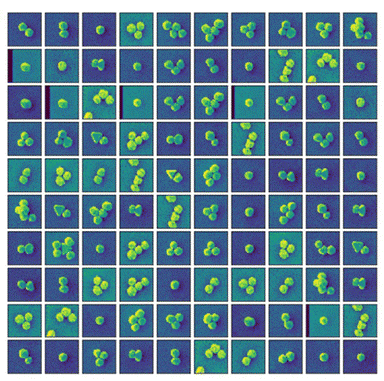Research
Scanning Probe Microscopy
We develop and apply advanced scanning probe microscopy (SPM) techniques to study materials at the nanometer scale, well below the diffraction limit of light. By combining optical, electrical, and mechanical measurements with a sharp AFM tip, we can connect local structure to device performance. Our methods, include: photoconductive AFM; time-resolved electrostatic force microscopy; and cantilever ringdown. These allow us to map photocurrent, surface potential, and charge dynamics, providing critical insights into the nanoscale behavior of semiconductors, energy materials, and bioelectronics.
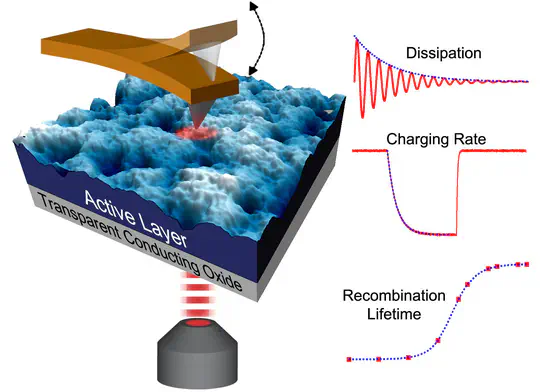
Solar Energy and Electronic Materials
Our lab studies next-generation thin-film semiconductors for photovoltaics and energy storage, including organic nonfullerene acceptors and hybrid perovskites. Using advanced spectroscopic techniques such as transient absorption, time-resolved photoluminescence, and excitation-correlation spectroscopy, we investigate how molecular packing, exciton delocalization, and interfacial defects influence charge generation, recombination, and device efficiency. We also explore strategies for improving device stability, including surface passivation and optimized device architectures to suppress degradation under reverse bias. This combination of materials design, characterization, and engineering enables higher power conversion efficiencies and more robust solar cells for future energy technologies.
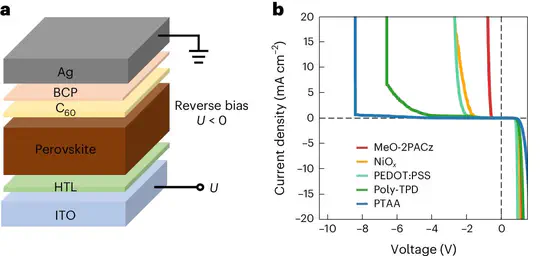
Colloidal Quantum Dots
Our research on colloidal quantum dots (QDs) focuses on understanding and optimizing their photophysical properties for next-generation optoelectronic devices, including high-brightness quantum dot light-emitting diodes (QLEDs) and single-photon emitters. Using advanced spectroscopic techniques such as steady-state and time-resolved photoluminescence, widefield microscopy, and single-QD imaging, we probe how surface chemistry, morphology, and ligand choice influence emission, efficiency, and photoluminescence stability. This fundamental understanding informs the design of QDs with improved brightness, reduced blinking, and enhanced operational stability, enabling their integration into scalable devices and applications ranging from high-performance LEDs to quantum light technologies as part of the NSF-funded IMOD Center.
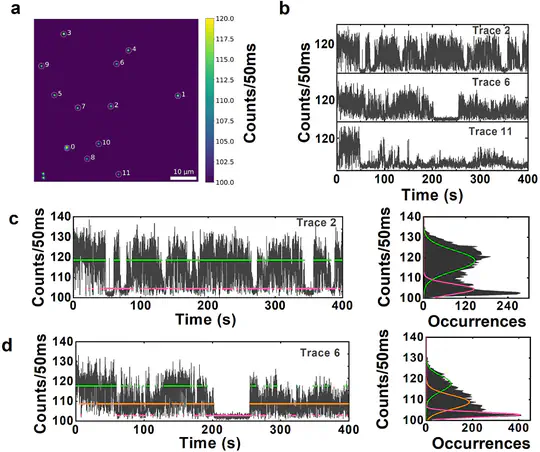
Organic Mixed Ionic–Electronic Conductors (OMIECs)
We investigate polymers that can simultaneously transport ions and electronic charges, enabling applications in biosensors, supercapacitors, and organic transistors. Our research combines polymer physics, device characterization, spectroscopy, and scanning probe microscopy to understand ion transport, swelling, and kinetics. By correlating local structure and crystallinity with device performance, we aim to design materials that operate efficiently at low voltages for bioelectronics and sensing applications.
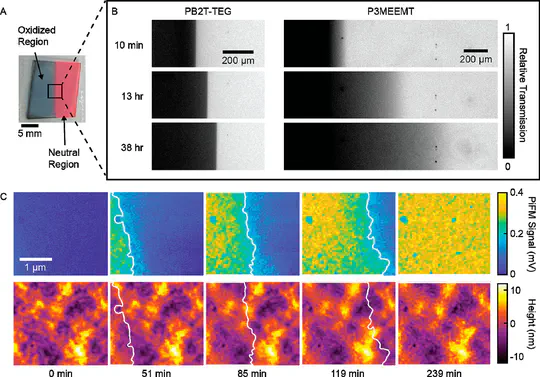
Plasmonics & Nanophotonics
We study plasmonic nanoparticles, including gold and silver nanostructures, which concentrate light and enable novel functionalities. Our research spans their fundamental chemistry and physics, as well as applications. By integrating them with templates like DNA, proteins, hydrogels, and azobenzene, we create tunable sensors, actuators, and reconfigurable devices. Collaborative efforts in materials synthesis, optics, and nanofabrication harness plasmonic effects for sensing, photonics, and enhanced light–matter interactions. We also use data-driven approaches, including automated image analysis and deep learning, to accelerate discovery of structure–property relationships.
